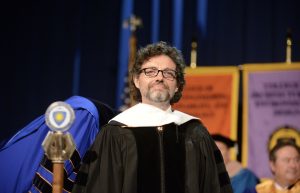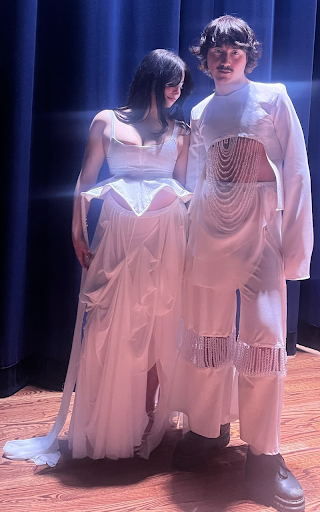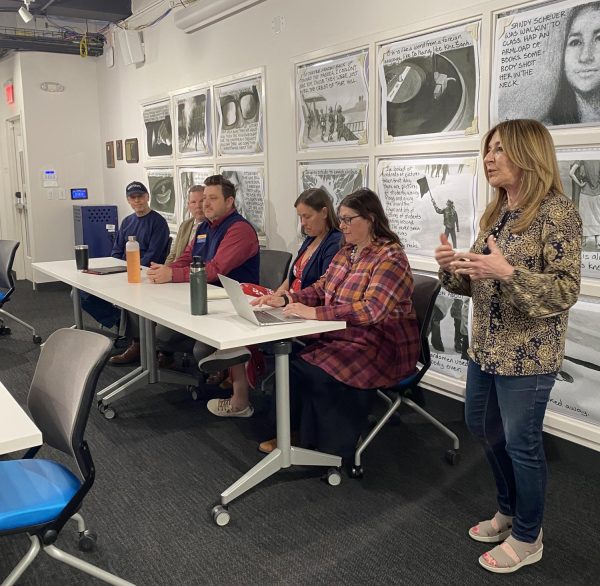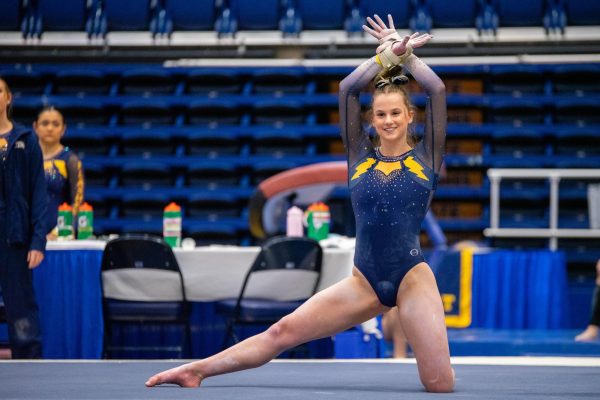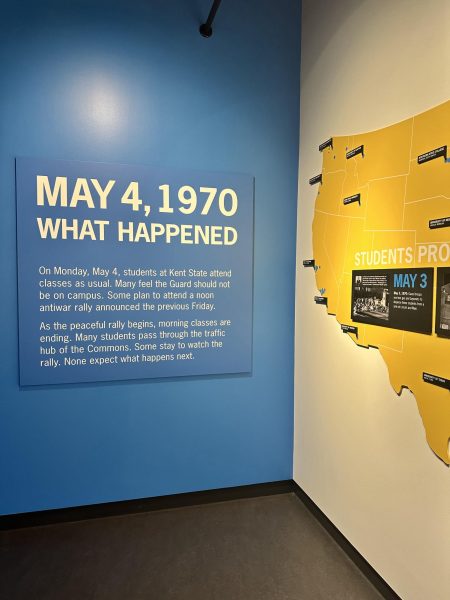Summer classes offer nontraditional alternatives
July 9, 2008
History professor Clarence Wunderlin leads the students in his History of Ohio class. History of Ohio is a part of Kent State University’s summer class schedule. James Mellyn | Summer Kent Stater
Credit: DKS Editors
Kris Kodzev said the only downside to summer classes is getting behind.
“If you get behind,” he said, “you’re done.”
Other than that, Kodzev, a senior middle childhood education major, said he likes schooling in the summer.
Senior Brittny Rendano agreed.
“The one thing I like (about summer classes) is that they’re shorter,” the fashion merchandising major said.
Provost Robert Frank said that summer creates “better cues for learning.”
Unfortunately, he added, summer enrollment this year has been very small compared to spring and fall semesters.
“That’s a goal we’re working on,” he said. “We’re up this summer, but not a significant amount, and we would like it to move up from where we are now.”
Terri Christensen said summer enrollment has gone up only slightly from last year, adding that the increase has been at the graduate level and that undergraduate enrollment levels have dropped.
“We have been charged to raise summer enrollment by 20 percent,” she said.
Christensen, the executive director for student success programs, said she has organized a task force to examine summer enrollment.
“This group will work to develop strategies to implement for (next) summer,” Christensen said.
A study from the University of Texas at Austin showed that students may be able to learn more from summer classes than traditional semester courses.
A May 21 press release noted “students’ preferences regarding course length (and) greater satisfaction with intensive courses” as part of the study’s findings.
Frank called the study accurate.
“Those are not surprising findings,” he said, adding that he agreed that higher doses of exposure to information, among other factors, help students learn.
“Students tend to take fewer classes,” he said of the summer semester. “They (also) procrastinate less. They don’t let things go so much that they can’t catch back up.”
The fast-paced learning associated with summer classes can cause students to hit the books harder.
“You have to study,” Kodzev said. “It stays fresh in your mind because you have a test every week, rather than every four weeks.”
Rendano agreed.
“It moves really fast,” she said, adding that professors sympathize with the accelerated learning, citing a product development class as an example.
“There is a lot of stuff that we would have normally spent three weeks on that we covered in an hour,” she said.
The number of classes offered this summer is similar to past summer semesters, Christensen said, but differences in scheduling have been offered to try to make classes more flexible for students.
“The classes are definitely smaller,” she explained, “allowing faculty to provide more hands-on type of experiences.”
One thing new to Kent State this summer is the President’s Academy, a group of high-performing high school students who start their collegiate careers at Kent State in the summer.
This, Frank said, helps incoming freshmen recognize the values of summer education and helps prepare them for the fall semester.
“I like them (summer classes) better,” Kodzev said. “You get done with it quicker.”
Contact principal reporter Maria Nann at [email protected].









